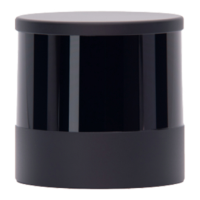What causes missing data packets in Hesai Measuring Instruments?
- RrossangelaSep 12, 2025
If you're experiencing an abnormal number of data packets, indicating missing packets, with your Hesai Measuring Instruments, check these items: Ensure the Azimuth FOV is properly set using web control or PTC commands. Verify that the Spin Rate is steady using PandarView 2, web control, or PTC commands. Confirm that the lidar's internal temperature is between –20? and 90? using PandarView 2, web control, or PTC commands. Make sure the Ethernet is not overloaded. Ensure no switch is connected to the network. Connect the PC to only the lidar and check for packet loss. Power cycle the lidar to see if the problem persists.

